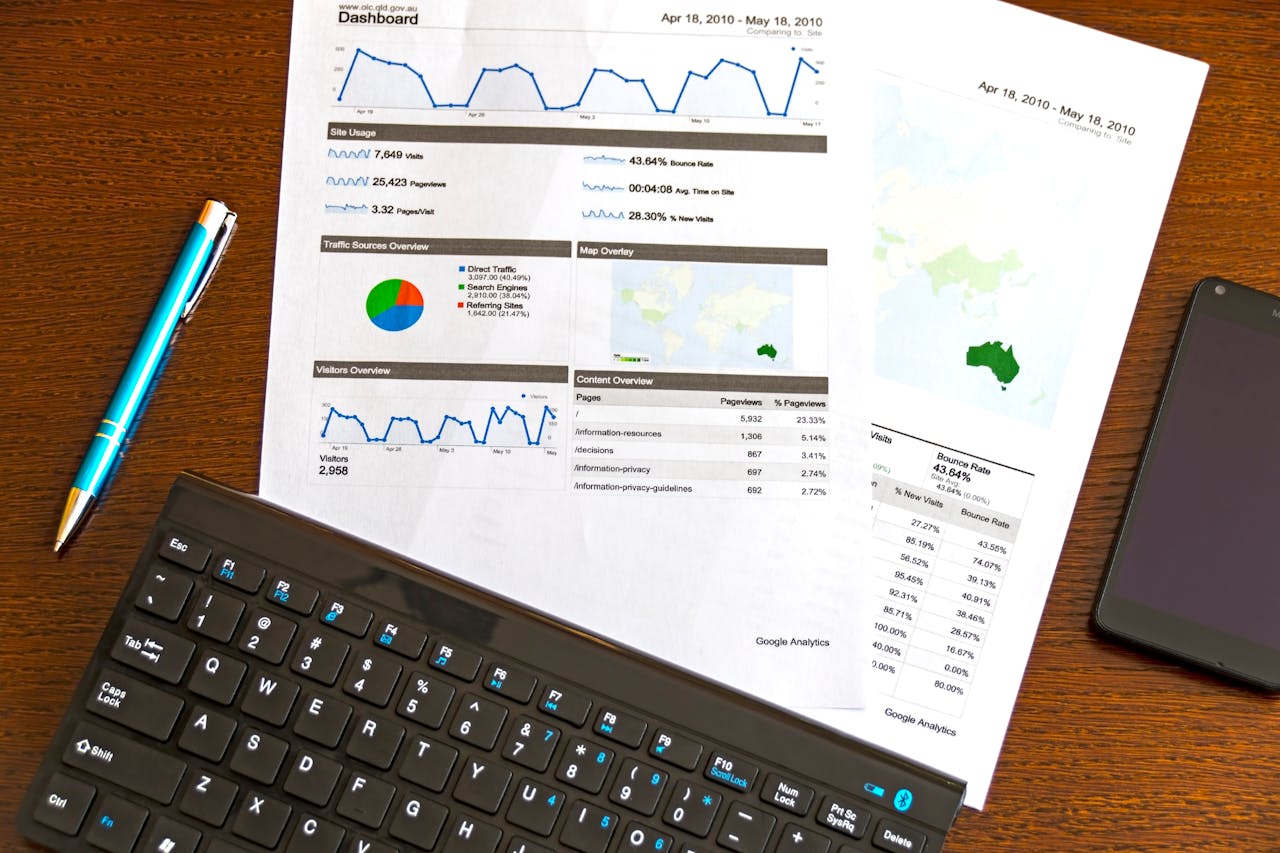Commercial and residential real estate firms generate an enormous amount of data. Every lease, maintenance request, rent roll, or capital project contributes to a growing pool of information. But gathering data is only half the equation. Acting on it, quickly and accurately, is where competitive advantages are built. That’s where enterprise real estate data analytics with Yardi steps in.
More than just a reporting tool, Yardi’s analytics capabilities help firms uncover patterns, identify risk, forecast performance, and refine operations without drowning in spreadsheets or manual reporting. Let’s take a deeper look at how Yardi helps transform complex real estate data into strategic action.
Data Without Direction Is Just Noise
Most real estate platforms offer dashboards and reports. The challenge is knowing what to track, how to filter it, and how to turn the results into decisions.
Enterprise real estate data analytics with Yardi is built to close this gap. It centralizes and connects data across your operations, so that insights are drawn from a single source of truth. With this foundation, teams can stop guessing and start measuring the right things.

1. Performance Tracking That Goes Beyond Rent Rolls
Rent collection and occupancy are only part of the picture. Yardi’s analytics tools help you track nuanced performance indicators: renewal rates, maintenance resolution time, delinquency trends by region, even lead-to-lease conversion metrics.
Instead of viewing each department as its own silo, enterprise-level reporting brings it all together. Regional managers can compare property-level performance across a portfolio in seconds, and asset managers can quickly spot properties that aren’t hitting income targets.
That level of insight is critical, especially in markets where margins are tight. According to Rentana, predictive analytics can help property managers maximize revenue.
2. Real-Time Dashboards Mean No More Month-End Surprises
Waiting until the end of the month to learn how a property performed is no longer acceptable. Real-time dashboards in Yardi Analytics offer up-to-the-minute visibility, which means teams can course-correct before it’s too late.
Are expenses creeping up? Is lease-up velocity lagging on a new development? With live data feeds, managers and executives alike can spot red flags early and act fast.
Better yet, dashboards are customizable by role. A leasing director sees different metrics than a CFO. This focused view improves decision-making across departments.
3. Forecasting Tools Built for Growth
Enterprise real estate data analytics with Yardi isn’t just about hindsight. It supports predictive modeling, so you can simulate future outcomes based on current trends.
Want to know how rising interest rates will affect NOI across your debt-financed assets? Curious how leasing incentives might impact vacancy fill times? Yardi helps you run these what-if scenarios without manually manipulating Excel models.
The ability to forecast with accuracy allows leadership to plan capital expenditures, staff up effectively, and avoid cash flow issues. Its strategic foresight is based on hard numbers, not hunches.
4. Drill-Down Reporting That Connects the Dots
High-level overviews are helpful, but the real power of Yardi analytics lies in its drill-down capabilities. If a regional performance score dips, you don’t need to request ten different spreadsheets to find out why. With a few clicks, you can trace the issue back to its root, be it rent concessions, unexpected repairs, or lagging renewals.
These kinds of layered insights help improve internal accountability. Managers can’t hide behind averages, and high performers can be recognized based on real data.
5. Portfolio-Wide Visibility Without the Clutter
Managing multiple asset types like residential, commercial, or mixed-use requires flexible analytics. Yardi’s platform allows users to compare performance across asset classes without losing context.
It also helps consolidate reporting for joint ventures or third-party managed assets. You can separate owner-specific metrics from broader portfolio indicators, keeping compliance clean while providing meaningful investor updates.
In fact, institutional investors are increasingly demanding more granular reporting. A KPMG survey revealed that 78% of institutional real estate investors factor data transparency into their funding decisions. Meeting that expectation starts with having an analytics platform that can deliver.
6. Custom KPIs That Reflect Your Strategy
One of the most overlooked aspects of analytics is customization. What’s important to one firm may be irrelevant to another.
Yardi Analytics allows you to define your own KPIs. Whether you’re tracking sustainability goals, capital improvement ROI, or social impact initiatives, the platform is flexible enough to support your firm’s unique focus areas.
This customization makes it easier to align reporting with investor demands, internal performance reviews, and long-term planning. No more adjusting your strategy to fit a pre-built report.
7. Streamlining Compliance and Audit Trails
Compliance is more than a box to check; it’s a key area of operational risk. Yardi Analytics tracks and logs actions across the system, providing a full audit trail for compliance events, lease approvals, and financial transactions.
This is especially important in affordable housing, commercial leasing with strict terms, and markets with rent control regulations. With built-in visibility, compliance teams can audit quickly and with confidence.
And when auditors come calling? Everything’s already documented.
8. Mobile Access for On-the-Go Decisions
Executives and managers are rarely tied to a desk. With mobile access, Yardi’s analytics tools are available wherever decisions are made, in the field, during site visits, or while traveling.
That means fewer delays, fewer follow-up meetings, and more immediate action. A leasing slowdown spotted in the dashboard today can be discussed on-site with property staff tomorrow.
Mobile-ready dashboards also support regional teams and third-party partners who need access without full administrative rights.
9. Turning Data into Conversations
Raw numbers rarely spark action on their own. But when analytics turn those numbers into visual stories (charts, trends, and outliers) conversations happen. Asset managers can highlight a dip in revenue and bring it to the table with a solution. Regional leaders can compare renewal rates side-by-side to share best practices.
Good data isn’t just for reporting, it drives collaboration. Yardi helps teams speak a common language through its intuitive visualizations and consistent reporting standards.
10. Integration With Other Yardi Tools for Seamless Action
The final and perhaps most important advantage of enterprise real estate data analytics with Yardi is that it connects directly to the rest of the platform.
If a KPI is underperforming, you don’t need to switch platforms to act. You can generate a budget adjustment, push a leasing promotion, or assign a maintenance priority, all from the same ecosystem. That kind of seamless transition from insight to action is rare, and it’s a cornerstone of the Yardi advantage.
Conclusion
Big data is only valuable when it translates into smarter operations, lower costs, and better tenant experiences. With enterprise real estate data analytics from Yardi, firms gain more than just numbers, they gain direction.
Whether you manage a portfolio of 50 units or 50,000, the ability to cut through complexity and make clear decisions is non-negotiable. Yardi Analytics puts that ability in your hands, connecting the dots, simplifying the view, and helping your team move forward with confidence.
Real estate moves fast. Your data should too, and it should move with purpose.





